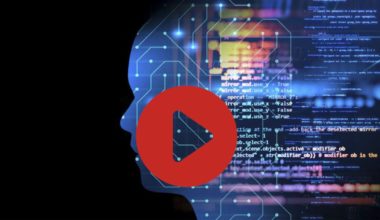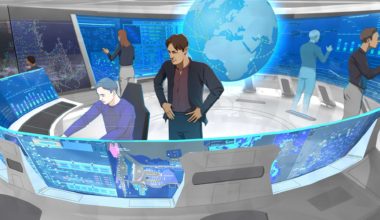The world is moving forward quickly. What was once science fiction (the internet, robots, artificial intelligence (AI), etc.), is increasingly commonplace. Underlying these innovations are challenges around both technology and how humans interact with new technology. Understanding both is crucial to addressing why users are resistant to technological innovations. Equally, it is paramount in fostering a path forward so that new technology solutions can drive value instead of floundering in the hands of skeptical users.
Table of Contents
Technology Is Here to Stay
“Come here, I want to see you” were the first words communicated over the telephone by Alexander Graham Bell to his assistant in 1876. After that first call, Bell penned a letter to his father in which he noted, “The day is coming when [telephone cables] will be laid on to houses just like water or gas – and friends converse with each other without leaving home.” Despite its revolutionary ability to connect people anywhere, anytime, it took approximately 75 years for the telephone to reach 50 million users. A lack of infrastructure and technological constraints are generally the two factors noted when discussing the very slow adoption of the technology.
Fast-forward to the 1950s, and the TV was introduced; it took TV about 13 years to reach 50 million users. Fast-forward again to the late ’80s, and the first commercially available internet hit the market – it took approximately four years to reach 50 million users. In 2016, Pokemon Go was launched and the app reached 50 million users in 19 days! The pace of technological adoption is quickening. The challenges that hindered the adoption of the telephone are all but nonexistent today.
Today, the internet serves as a common backbone for almost all technological innovation. While not perfect, its common use architecture allows anyone, anywhere, to develop and distribute a new technology with ease. Further, since the mid 1900s, Moore’s law has seen the steady doubling of technological capability every two years or so.
Today, most of us carry a mini-supercomputer in our pocket. Ironically, these supercomputers take us back to the beginning of the story; our smartphones are designed to supersede the now outdated telephone system.
Today, consumer-facing technology companies are able to innovate on time frames measured in months and users can adopt those innovations in mere days. While the pace of innovation and adoption is slower in the enterprise IT world – it too has dramatically increased over the past two decades.
Over the past 25 years, improvements in computer hardware have resulted in an increase in computing power by a factor of 2,000 times. This seems impressive until one compares it to the advances in optimization algorithms over the same period. For instance, Linear Programming algorithms, considered the most important class of optimization techniques by many experts, have improved by a factor of 1.4 million times.
When combined, the effects of both advances generate a tremendous 2.8 billion times the improvement in processing capability. To better understand this, a planning model using Linear Programming that takes us a second to solve today would have taken almost 100 years to solve in the ’90s.
When you combine the technological innovations we are capable of today with an entire generation of digital natives – the millennials – we are headed directly into an era when technology will not support terminal operations, but rather define them. We’re seeing the start of this in automated terminals, where processes have been redefined to suit robotic equipment. The addition of technologies like AI and machine learning (ML) will see more significant changes to come.
We’re Creatures of Habit
After 25 years of implementing systems, we’ve learned a lot about what users like and dislike about systems that offer decision support. Predominantly, most users are skeptics, at least to begin with. Why? What are their concerns underpinning the use of advanced technology? And, how do you implement change that does not cause disruption?
In psychology, the measure that best aligns with a willingness (or lack thereof) to try new things is called “openness” – it is one of the Big Five personality traits and is well researched and well documented. In most cases, openness follows a normal distribution, meaning that some people are very open to new experiences, some are really closed to new experiences, and the rest lie somewhere in the middle. Those in the middle are likely to have areas of their life where they are more open and areas where they are more closed.
Interestingly, those who are more open to new experiences are more likely to progress up the corporate ladder into leadership roles. These are also the individuals who are often responsible for specifying and selecting new systems. On the flip side, their colleagues are generally more set in routines – a trait that is strongly associated with moderate to low openness. Experiences that challenge those routines are almost always interpreted in a negative context. The saying “We’re creatures of habit” isn’t a saying because it sounds good, but because it is true.
The largest concern users have when first working with decision support systems is that the system will replace them. Job loss, or even the fear of job loss, is extremely powerful. Some psychologists argue that the emotions surrounding job loss are on par with those surrounding any kind of major emotional loss. This fear can be exaggerated depending on how the project is introduced to the users. When users are not actively involved in defining the criteria and in the selection process of the system, they are often taken off-guard when the system is ready to be implemented.
It takes time for users to trust that an advanced decision support system isn’t going to take their jobs; however, this is only their first challenge to overcome. New, complex systems come with the challenge of learning a new system. Senior staff, who often already feel challenged by technology, are often stressed by the idea of learning how to use a new system. This fear is exacerbated when younger employees are able to learn the new system more quickly – in these cases, senior staff can often revert to fears of job loss.
There are also feelings of distrust: “If it isn’t broke, don’t fix it.” Many users are confused as to why new systems are implemented. They believe they’ve managed to run the terminal successfully without a technology system and feel as though their experience and skills are underrated by its introduction – especially with decision support systems that are capable of making the majority of the decisions they would normally make. These feelings of distrust often lead to features within systems being disabled or ignored.
When implementing a new system, terminal operators need to understand that the project is more than a technology project that will deliver specific management KPIs by improving operational parameters A, B, and C, leading to an ROI of X over N years. Implementing a new system is as much a project about cultural change as it is about operational change, and to implement cultural change, change management processes can be of great benefit.
It is estimated that only 54% of major change projects are successful. Those that fail are plagued by higher-than-expected costs and lowered employee morale. Studies also show that when employees see major projects fail, or fail to deliver major elements, cynicism sets in, which in turn further undermines adoption, utilization, and worse – company culture.
Change management is a well-researched branch of social and business science with many models and techniques that can be implemented. Of the many available, there are some common elements, such as involving every layer of your organization throughout the entire process, working from within your culture to implement change, and continuously assessing and adapting your project to suit the combined technological and cultural needs of your organization.
Getting Technology Implementation Right
With the onslaught of technological innovation, one could be left wondering whether technology should just replace humans to avoid the challenges a human element adds to a technology project. It is an easy conclusion to draw when you consider that, today, decision support systems are capable of running a terminal’s daily operations automatically with little to no human intervention. Add to this equation the advancements in AI and ML that are only enhancing an intelligent system’s learning and decision-making capabilities, and one can easily envisage a future when the human operators of ports are obsolete in due course.
History can lend a hand here. A technology we all consider commonplace today revolutionized its industry and the world after it was introduced in 1967 in Enfield, London. When it was conceived, the same questions that face the port industry today were present – but how the story unfolded isn’t as straightforward as you might think. The technology, of course, is the Automated Teller Machine, or ATM, as it became commonly known to the world.

When you move past the marketing spin behind the development of the ATM (offering customers convenience), banks pursued the technology for two primary reasons: addressing workforce limitations (banking unions in the UK wanted banks to close on Saturday) and reducing costs (operational labor costs, to be more precise).
Well, we all know the ATM was a success for the technology, but how about the humans? ATMs achieved their goals of allowing banks to reduce their operational hours and reduce the total number of tellers required per branch (fewer humans). The twist is that because banks could allow for greater cost controls per branch, the number of branches increased dramatically, which in turn led to an increase in bank teller positions in the market (more humans). Further, their roles evolved from completing the mundane, simple task of dispensing and collecting money to ones that added increased value to banks, such as selling services or improving customer service outcomes.
There is one more plot twist in the ATM story. ATMs led to the creation of an entirely new service industry. Never before had a technology needed to be so exposed to the elements – the mean time between failures was high and humans were the intervention to resolve the issues that arose. The rise of the ATM also led to the creation of the ATM service technician and the growth of an industry.
We see the same story play out across other industries too. The introduction of automated weaver technology in the 19th century led to an increase in the number of weavers. The introduction of electronic discovery (e-discovery) software in legal offices in the 1990s led to an increase in paralegals.
The moral of these stories – technology enables humans to achieve. When humans are relieved of mundane tasks, they are enabled to focus on higher-level problems that technology isn’t yet capable of automating.
The future of humans in terminal operations isn’t bleak. In fact, it is likely to be better than ever before. As operators begin to allow intelligent systems to assume the day-to-day decision-making in terminal operations, they will be free to focus their skills and experience on solving larger operational challenges, managing by exception, and improving customer service outcomes.
The Operator of the Future
Terminal operators who excel in the future will be the ones who develop deeper partnerships with their technology partners. As the pace of innovation continues to quicken, traditional specification, development, and delivery business models will not suit the terminal industry. New business models based on mutual trust, shared risk, and joint reward will be the defining characteristics of successful terminal operators of the future. These new contracts will allow for flexibility in project delivery that does not exist today, while allowing for improved outcomes for end-users of the systems and better cultural outcomes for the organization.


